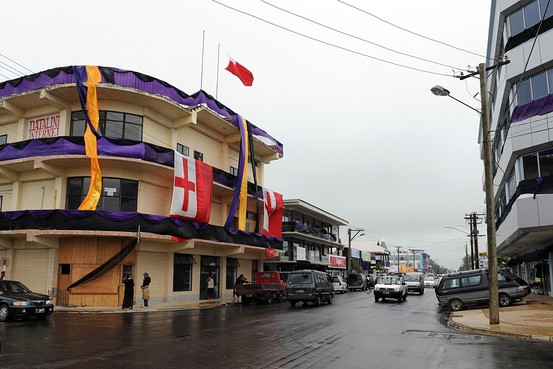
The Pacific’s billion-dollar question
The news that China will provide a further USD 1 billion in concessional loans to Pacific island countries has been met with a general sense of jubilation. But this may well be a cause for concern rather than celebration.
A recent paper, Unsure Refuge, published by the Pacific Institute of Public Policy investigates the consequences of the rapid increase in concessional lending to Pacific island governments. The paper points to a desire to rush through concessional loan agreements that is undermining public finances and failing to produce the infrastructure projects the region needs.
Last week at the 2nd China-Pacific Islands Countries Economic Development and Cooperation Forum, Chinese Vice Premier Wang Yang offered to increase cooperation with the region and ‘further support the economic and social development of Pacific islands’. Part of this support comes in the form of USD 1 billion of concessional loans, however it has been suggested that this may be combined with another $1bn of loans channeled through China Development Bank. As is usually the case, they will be used to fund infrastructure development.
These are undoubtedly large sums for the region and significantly larger than agreed upon at the 2006 forum. However, this latest offer builds on a significant scaling up in lending from China’s development banks that followed their move towards commercialisation in 2007. For the Pacific, one of the largest sums in recent years came at the end of 2012 with China reportedly offering the Papua New Guinea government access to a soft loan facility worth in excess of USD $2bn – this latest announcement appears to add to some already large amounts.
Yet little is known about this latest set of concessional loans or indeed the soft loan facility offered to the PNG government last year.
Nobody disputes the value of sober, debt-driven investment to fund much-needed infrastructure. One poster to the Yumi Toktok Stret Facebook group noted that the new loan facility announced at the China-Pacific Island Countries Economic Development and Cooperation Forum was a ‘great gesture and a blessing’ while stressing ‘now it’s a matter of spending it wisely’. Actually, it is about borrowing (and lending) wisely.
Despite the best intentions – or perhaps the rhetoric – concessional lending in the region is currently failing us. We see it in the increasing burden of debt repayments eating into health and education budgets; we see the failing and costly-to-maintain infrastructure projects; we see public financial management processes being undermined; we see governments cutting spending to avoid default.
As governments across the region face the challenge of keeping up with growing demand for public services, the resources to do so are increasingly being diverted to paying-off public debt, driven to a large extent by concessional loans. In 2013 Samoa’s spending on servicing debt will be equivalent to almost three quarters of government spending on education. Tonga will spend about the same on debt servicing as it does on health, and the government in Vanuatu will spend more than its current health budget on paying back its debt. In effect we are reducing what we have to spend on essential services, while we receive little from our investments for this sacrifice.
Too few people are asking why we are paying for wharves that don’t exist, defunct development banks, roads that have deteriorated and institutions that are weaker than ever. At the forum held last week there was equally no discussion of the already substantial debt burdens of some Pacific island nations. All too often, naïve assumptions about not only the terms of payment, but also whether repayment is necessary at all, means these important issues are sidestepped.
For Pacific islands, with their well-known vulnerability and small government budgets, tolerance for debt must be lower. Those that come offering these ‘blessings’ must tread carefully. Yet despite the warning signs, politicians, bureaucrats and development bankers (including the multi laterals) remain unmoved by racking up the debts of tomorrow. Extended, sometimes elastic, grace periods ensure that those who sign up to the worst loans will not be around to face the results.
These incentives must change to allow Pacific island governments to sensibly manage their public finances and to ensure debt-driven investments provide the benefits that are promised.
Until then, any further big offers of concessional lending will be a cause for concern rather than celebration.

